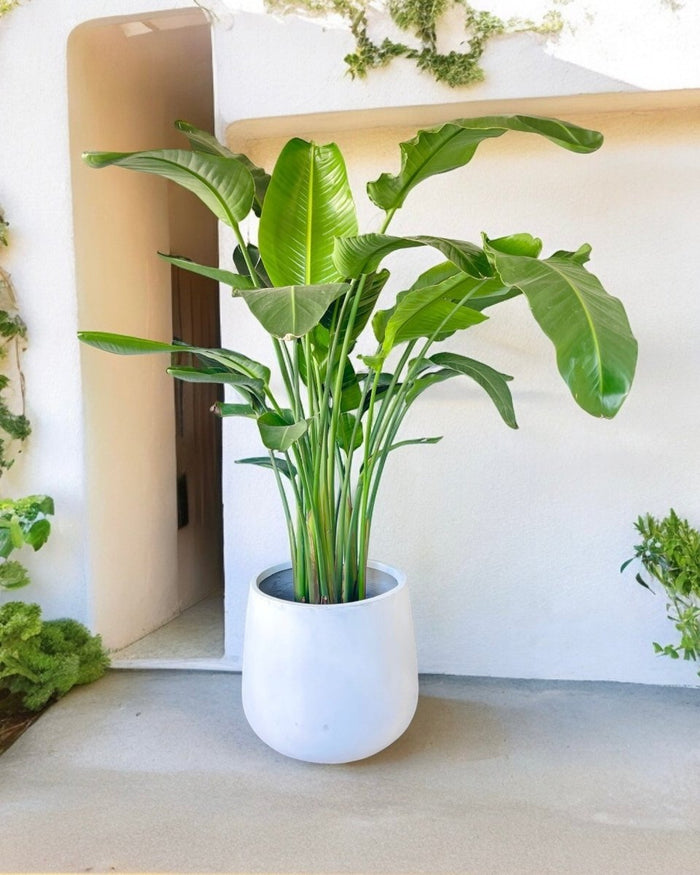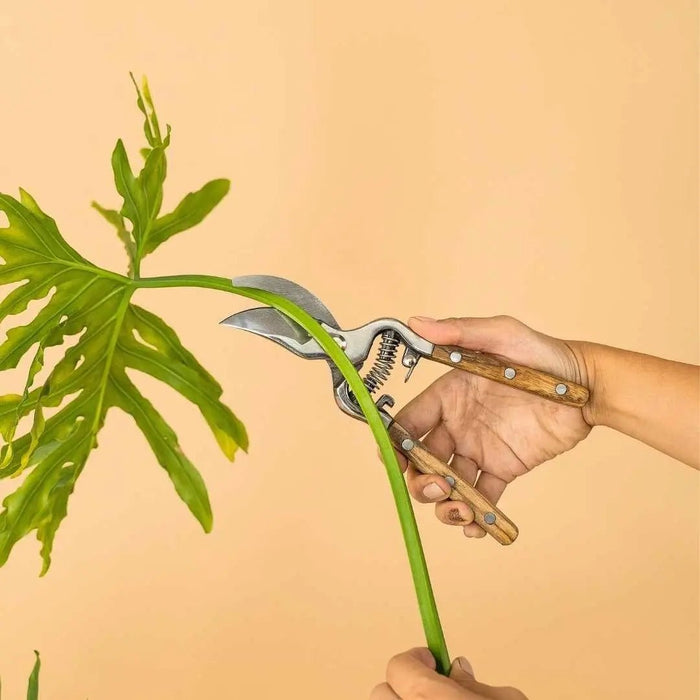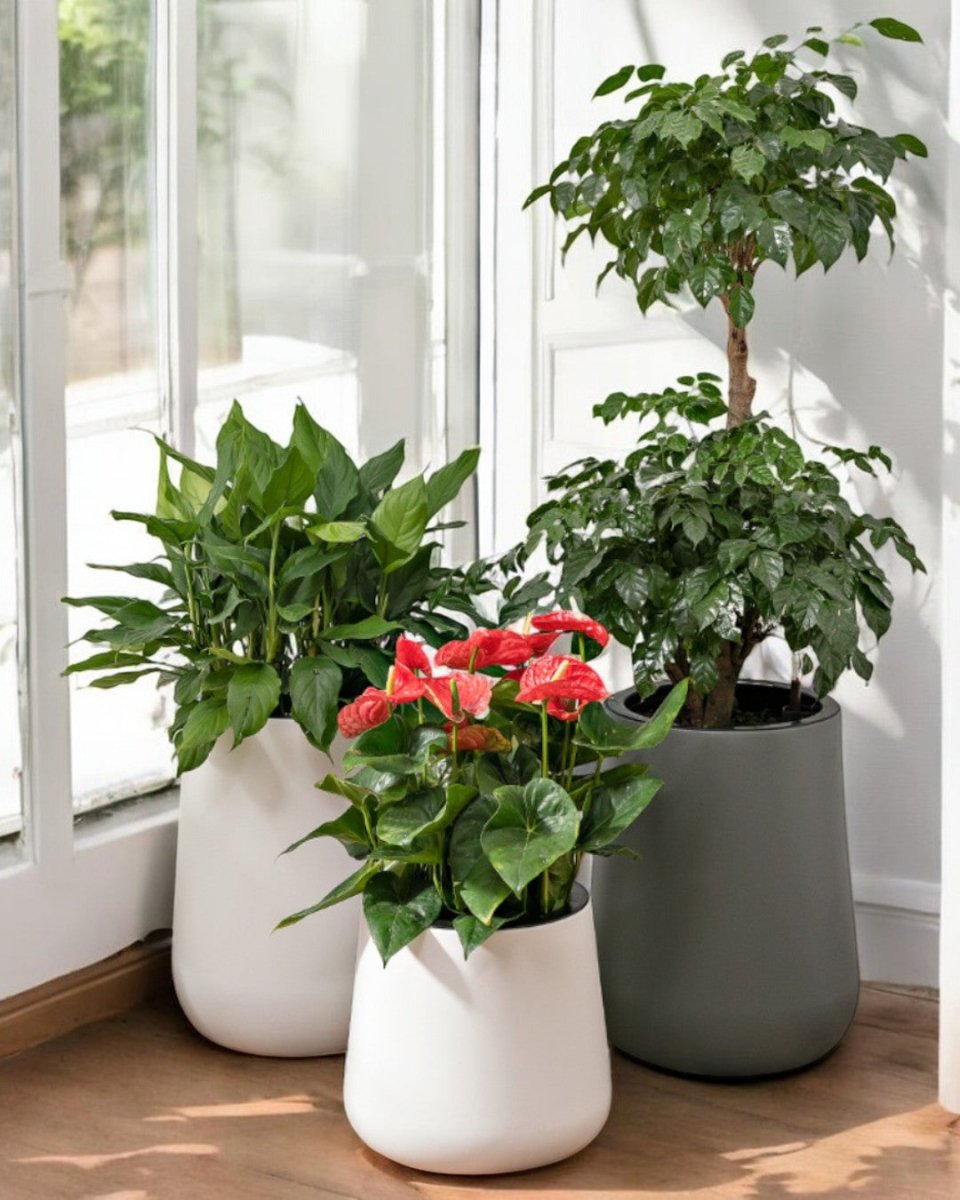Understanding Plant Watering Needs: How Much Is Too Much?
Posted on June 21 2024

The Risks of Overwatering and Underwatering
Effects of Overwatering on Plant Health
Overwatering can have detrimental effects on plant health. It can lead to root rot, which occurs when the roots are constantly submerged in water, depriving them of oxygen. This lack of oxygen can cause the roots to suffocate and die, ultimately leading to the death of the plant. Additionally, overwatering can leach essential nutrients from the soil, further depriving the plant of necessary sustenance for healthy growth. Plants that are overwatered may exhibit symptoms such as yellowing leaves, wilting, and a general lack of vigor. It is important to note that different plant species have varying water requirements, so it is essential to research and understand the specific needs of each plant to avoid overwatering.
Consequences of Underwatering for Plant Growth
Conversely, underwatering can also pose significant risks to plant growth. When a plant does not receive an adequate amount of water, it can experience wilting, stunted growth, and leaf drop. Insufficient water intake can hinder the plant's ability to carry out essential processes such as photosynthesis, leading to a decline in overall health and vitality. In severe cases, prolonged underwatering can result in irreversible damage to the plant, making it more susceptible to pests and diseases. Signs of underwatering include dry and crispy leaves, slow growth, and in extreme cases, plant death.
Finding the Right Balance
Finding the right balance in watering practices is crucial for maintaining the health and well-being of plants. It is essential to consider factors such as the plant species, environmental conditions, and soil type when determining the appropriate watering schedule. One effective way to prevent overwatering and underwatering is to check the soil moisture levels regularly. This can be done by inserting a finger into the soil to feel its moisture content or using a moisture meter for more accurate readings. Additionally, watering plants in the early morning or late afternoon can help reduce water loss due to evaporation and ensure optimal absorption by the roots.
By understanding the risks associated with both overwatering and underwatering, gardeners can implement proper watering techniques to promote optimal growth and vitality in their plants. Remember, a well-hydrated plant is a happy plant!
Signs of Overwatering and Underwatering
Identifying Signs of Overwatering in Plants
Overwatering is a common issue that can lead to the decline of plants. It is crucial to be able to identify the signs of overwatering to prevent damage to your plants. Some common signs include:
1. Yellowing Leaves: If the leaves of your plant are turning yellow and becoming mushy, it could be a sign of overwatering.
2. Wilting: While it may seem counterintuitive, overwatered plants can also wilt. If your plant looks droopy and the soil is wet, you may be overwatering.
3. Root Rot: Overwatering can lead to root rot, which is a serious condition that can be fatal to plants. If you notice a foul smell coming from the soil or mushy roots, your plant may be suffering from root rot.
Recognizing Symptoms of Underwatering in Plants
Underwatering is another common issue that can affect plant health. It is important to be able to recognize the symptoms of underwatering to address the issue promptly. Some signs of underwatering include:
1. Dry, Brittle Leaves: If the leaves of your plant are dry, crispy, and easily breakable, it may be a sign of underwatering.
2. Wilting: Similar to overwatering, underwatered plants can also wilt. If your plant looks droopy and the soil is dry, it may need more water.
3. Slow Growth: Underwatered plants may exhibit slow growth or stop growing altogether. If your plant is not thriving as expected, it could be due to lack of water.
Overwatering and underwatering are common issues that many plant owners face. Both can have detrimental effects on plant health if not addressed promptly. It is essential to strike a balance in watering practices to ensure the well-being of your plants.
How to Prevent Overwatering and Underwatering
To prevent overwatering, consider the following tips
1. Check Soil Moisture: Before watering your plants, check the soil moisture level. Stick your finger into the soil; if it feels damp, hold off on watering.
2. Use Well-Draining Soil: Ensure your plants are potted in well-draining soil to prevent waterlogging.

3. Monitor Watering Frequency: Establish a watering schedule based on your plant's specific needs rather than a fixed routine.
To prevent underwatering, you can:
1. Establish a Watering Routine: Set a consistent watering schedule to ensure your plants receive adequate moisture.
2. Observe Plant Behaviour: Pay attention to how your plants respond to watering and adjust accordingly.
3. Consider Environmental Factors: Factors such as temperature and humidity can affect your plant's water requirements.
By understanding the signs of overwatering and underwatering and implementing preventive measures, you can promote healthy growth and longevity in your plants.
Strategies for Proper Plant Watering
Understanding Your Plant's Watering Needs
Properly watering your plants is crucial for their overall health and vitality. To ensure you are meeting your plant's specific watering requirements, consider the following factors:
1. Plant Type: Different plants have varying water needs. Succulents and cacti, for example, require infrequent watering due to their water-storing capabilities, while tropical plants may need more regular moisture.

2. Soil Type: The type of soil in which your
plants are potted can impact how often you need to water them. Well-draining soil will require more frequent watering than soil with higher water retention.
3. Environmental Conditions: Factors such as temperature, humidity levels, and sunlight exposure can influence how quickly soil dries out. Be mindful of these conditions when establishing a watering routine.
Signs of Overwatering and Underwatering
It's essential to be able to recognize the signs of both overwatering and underwatering in your plants to prevent damage and promote healthy growth. Look out for the following indicators:.
Overwatering: Yellowing leaves, mushy stems, and a foul odor emanating from the soil are common signs of overwatering. Adjust your watering frequency if you notice these symptoms.
Underwatering: Wilting leaves, dry and crispy foliage, and soil pulling away from the pot's edges are signs that your plant is not receiving adequate water. Increase your watering frequency accordingly.
Watering Techniques for Different Plant Types
Each plant type may benefit from specific watering techniques to optimize their growth. Consider the following methods for watering various plant varieties:
Deep Root Watering: For plants with deep root systems, such as trees and shrubs, watering deeply but infrequently encourages root growth downwards.
Top-Down Watering: Plants with shallow roots, like annual flowers, may benefit from watering at the soil surface to ensure water reaches their root systems effectively.
Mulching: Applying a layer of mulch around plants helps retain soil moisture, reducing the frequency of watering required and providing a buffer against extreme temperatures.
By understanding your plant's individual watering needs, being vigilant for signs of water stress, and employing appropriate watering techniques, you can cultivate a thriving and lush garden that flourishes with vitality.
Tools and Techniques for Effective Plant Watering
Utilizing Appropriate Watering Tools
Watering cans: The classic tool for watering plants, watering cans come in various sizes and designs to suit different needs. Choose a watering can with a narrow spout for targeted watering and a larger capacity for fewer refills.

Hose with a nozzle: Ideal for watering plants in larger gardens or outdoor spaces, a hose with a suitable nozzle attachment provides a convenient way to water plants efficiently. Adjust the nozzle to control the water flow and choose a nozzle that offers a gentle spray to avoid damaging delicate plants.
Watering spikes: These handy tools are designed to deliver water directly to the plant's roots, promoting efficient watering and reducing water wastage. Watering spikes are particularly useful for potted plants and can help maintain consistent soil moisture levels.
Understanding the Role of Soil Moisture in Watering
Soil moisture meters: To determine when to water your plants, consider using a soil moisture meter. These devices provide accurate readings of the moisture levels in the soil, helping you avoid overwatering or underwatering your plants. Insert the probe into the soil to get a reading and adjust your watering schedule accordingly.
Observation and touch: Another effective technique for assessing soil moisture is through observation and touch. Check the soil regularly by visually inspecting it and feeling the top layer with your fingers. Dry, crumbly soil indicates a need for watering, while soggy soil suggests overwatering. By monitoring the soil moisture levels, you can develop a watering routine that meets your plants' needs.
Mulching: Applying a layer of mulch around your plants can help retain soil moisture by reducing evaporation and protecting the soil from drying out quickly. Organic mulches like compost, bark chips, or straw not only conserve moisture but also improve soil structure and provide nutrients to the plants. Mulching is a simple yet effective way to support healthy plant growth and reduce the frequency of watering.
By incorporating these tools and techniques into your plant care routine, you can ensure effective watering practices that promote the health and vitality of your plants.



































































